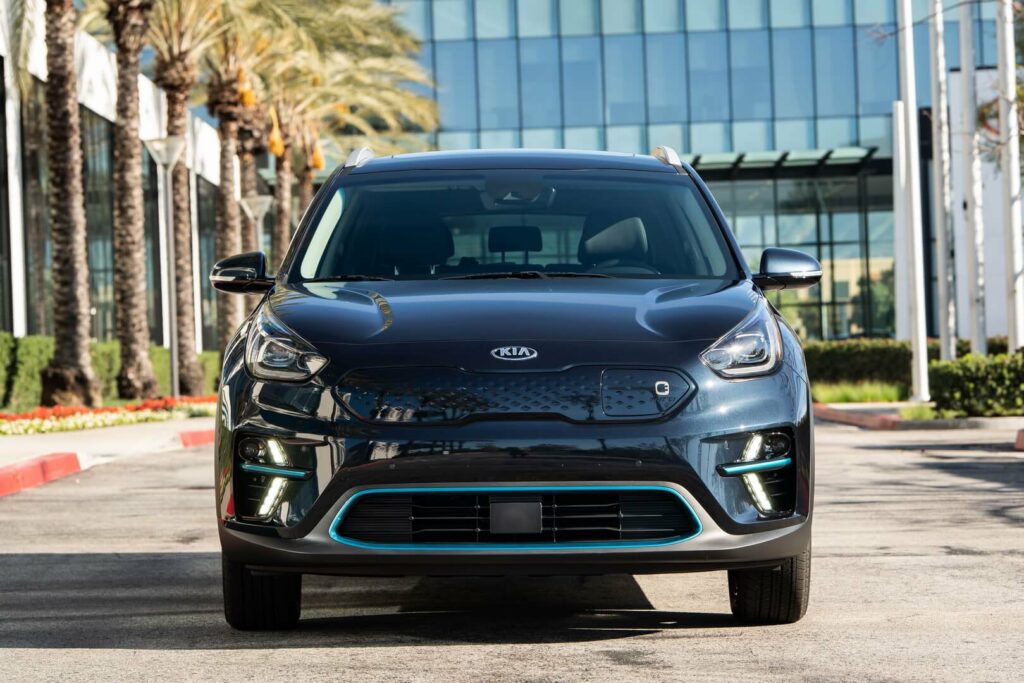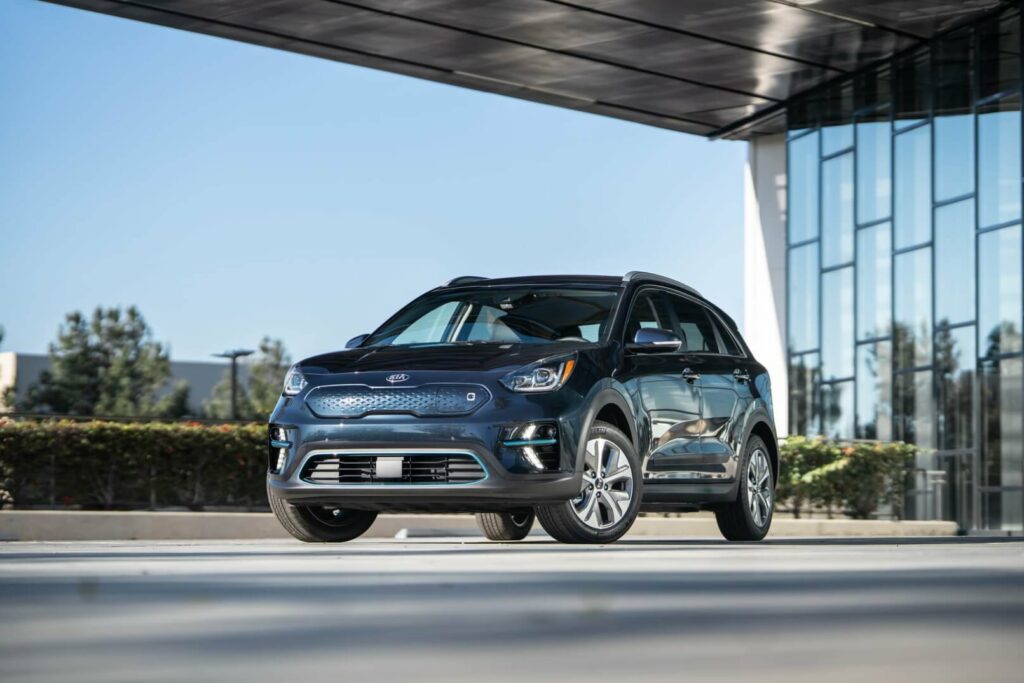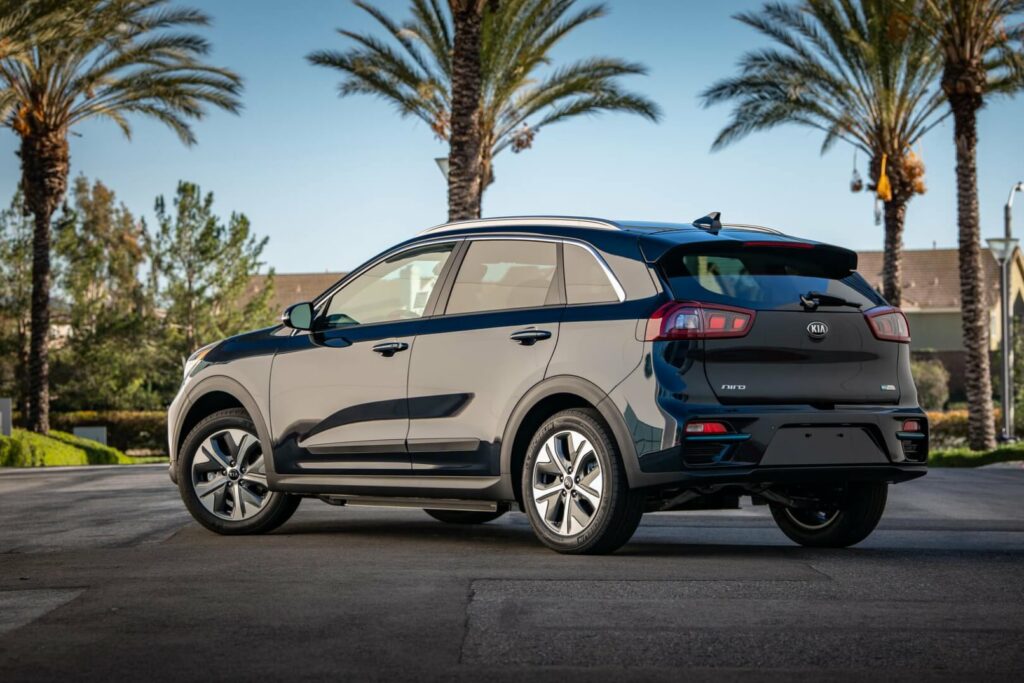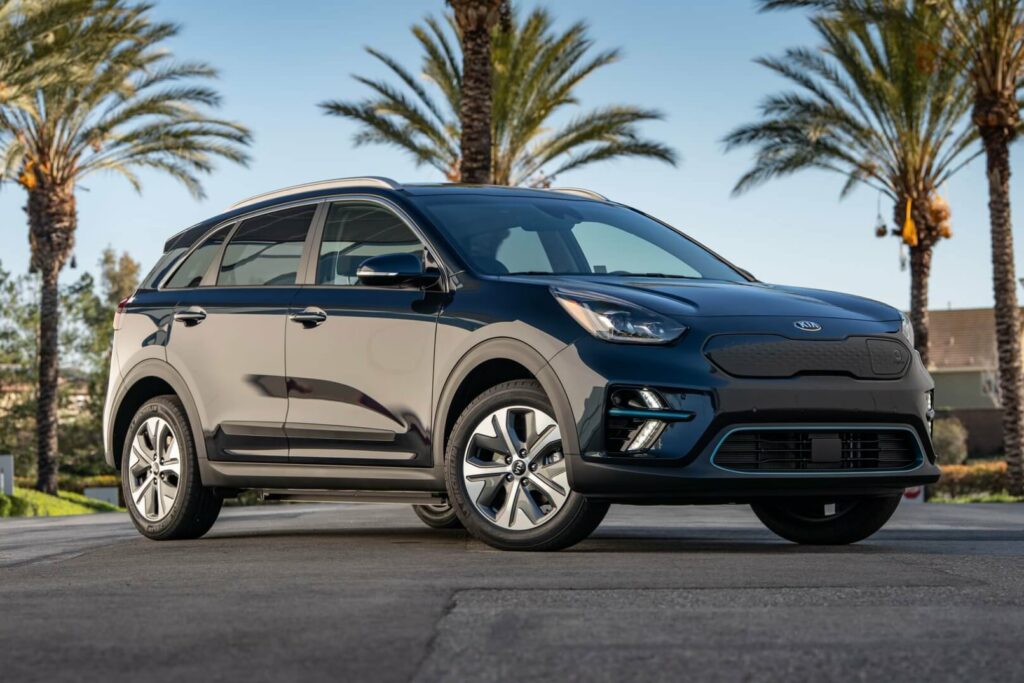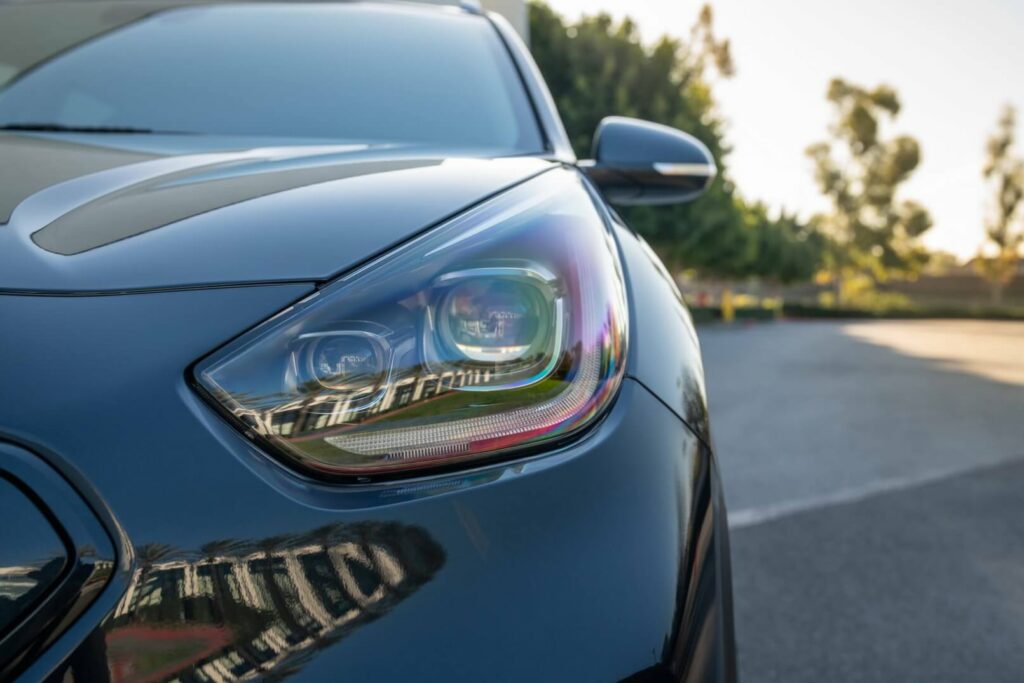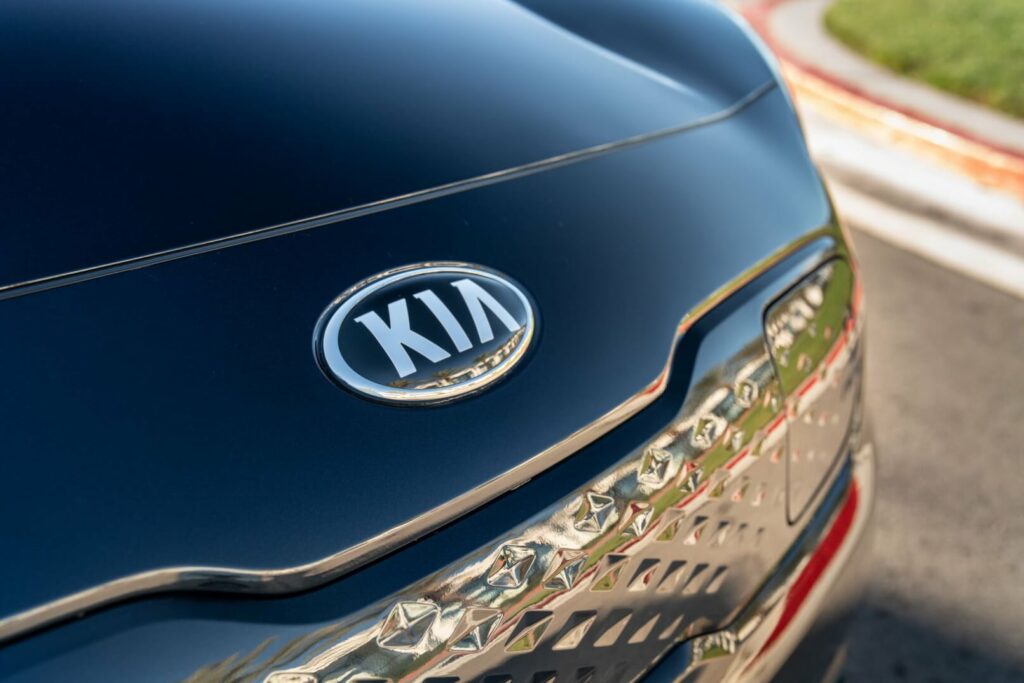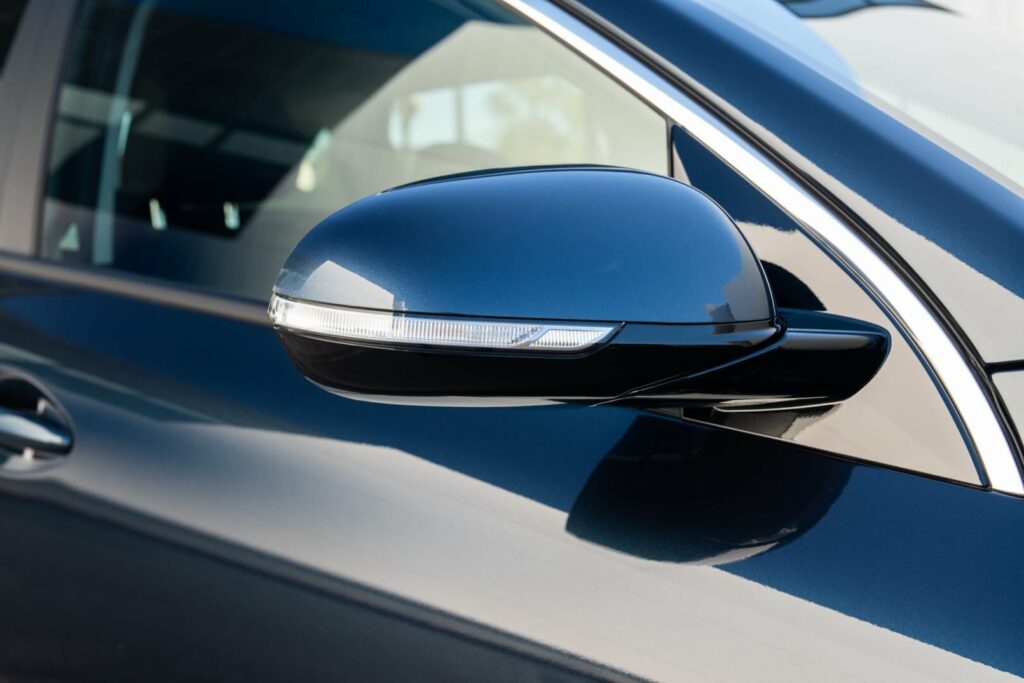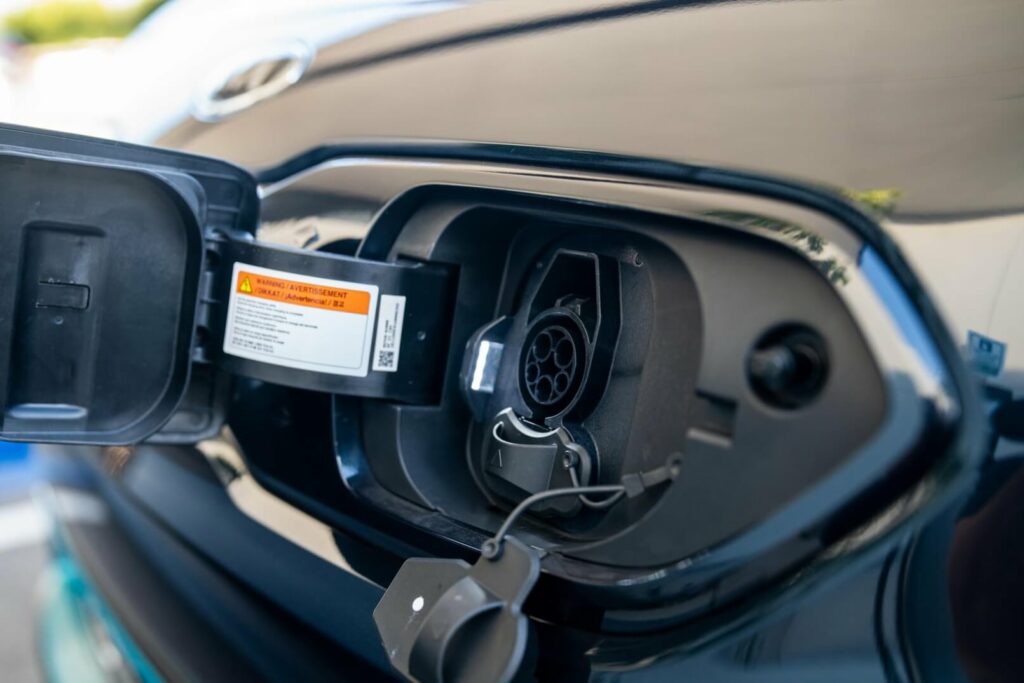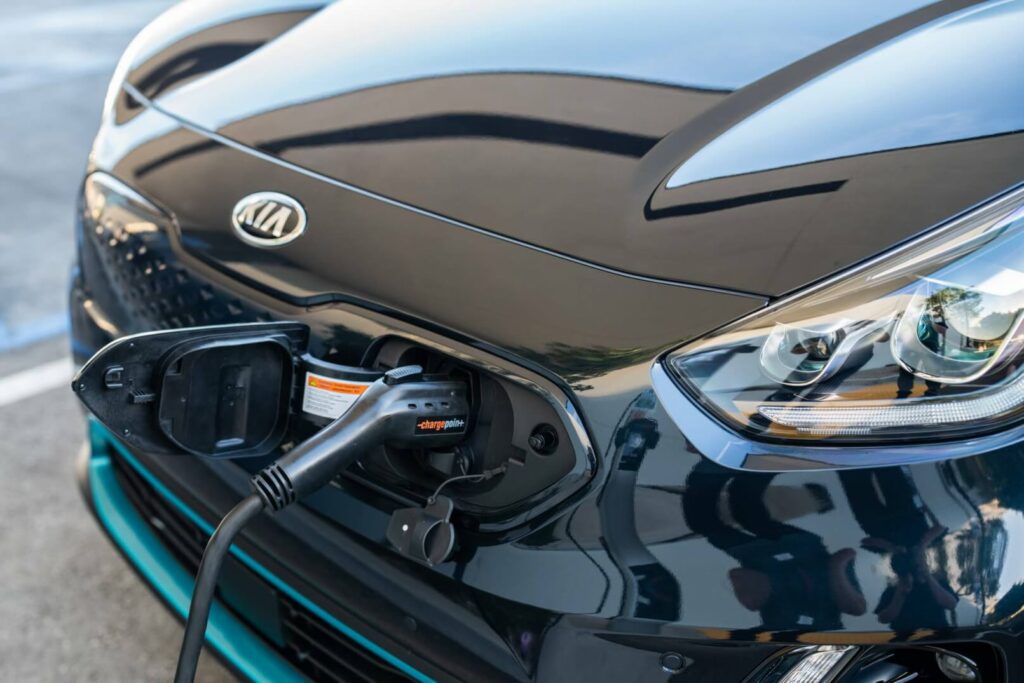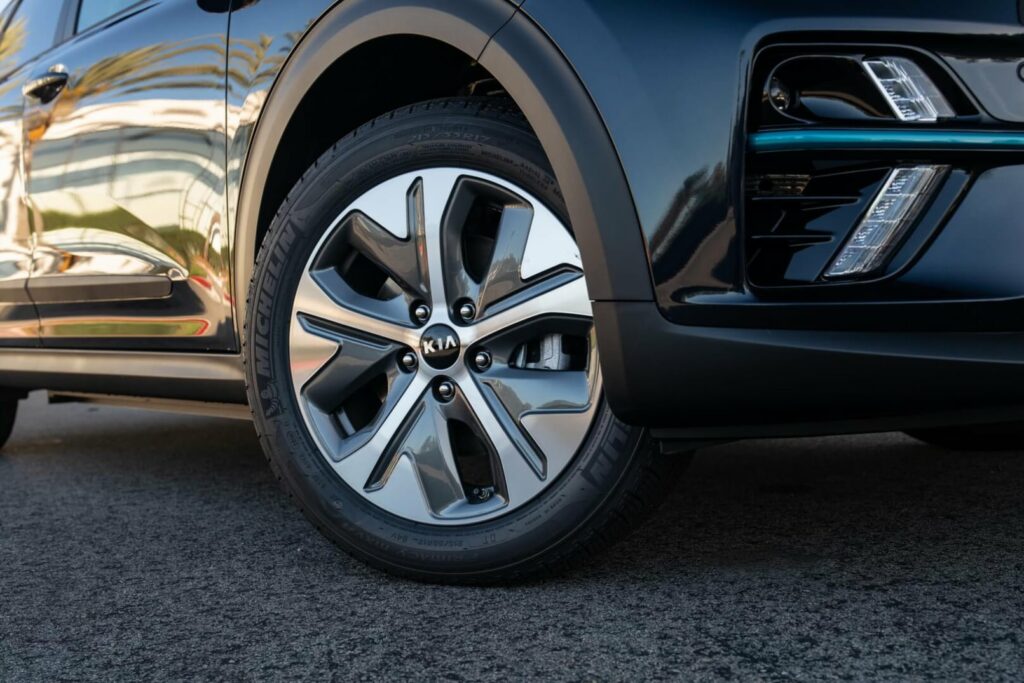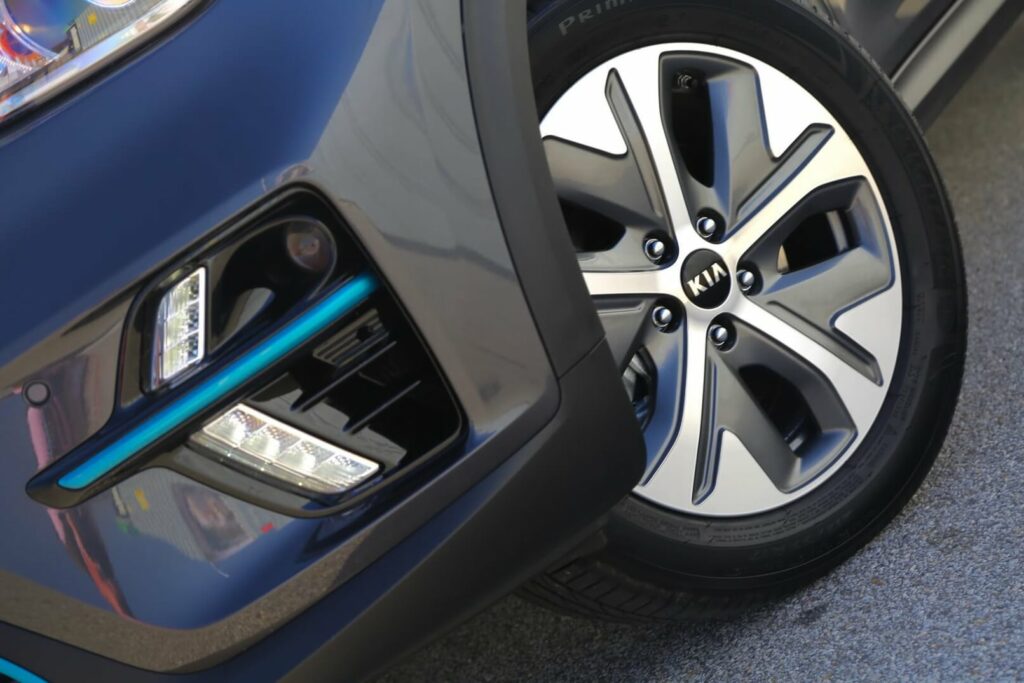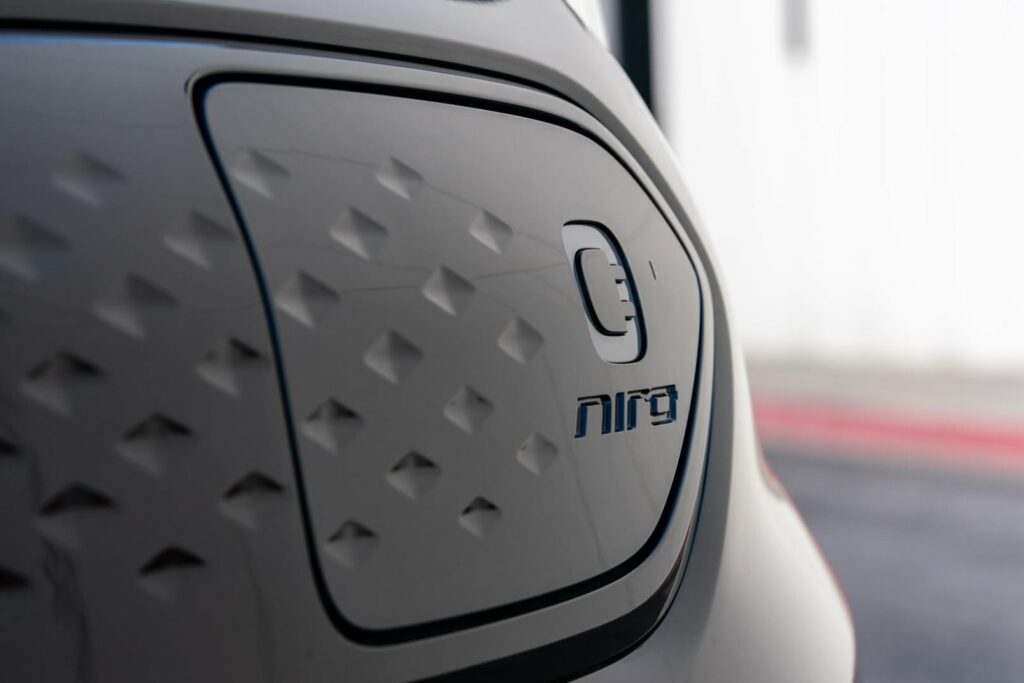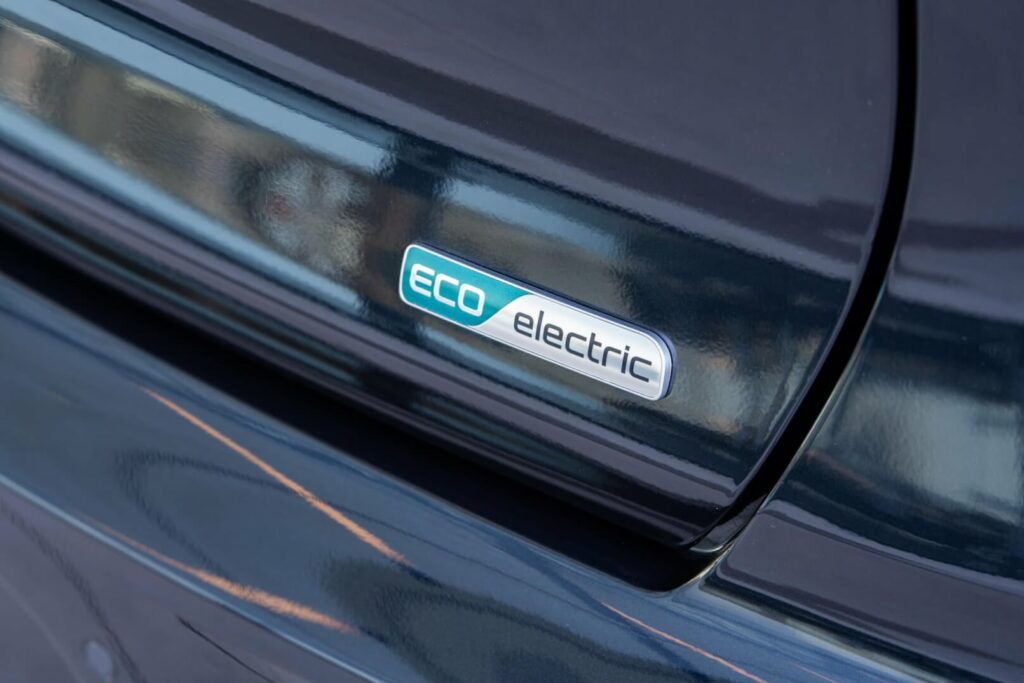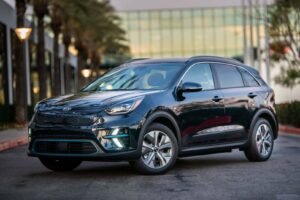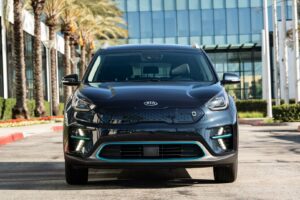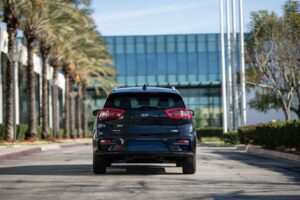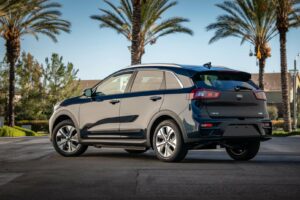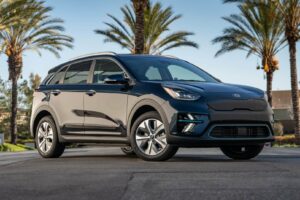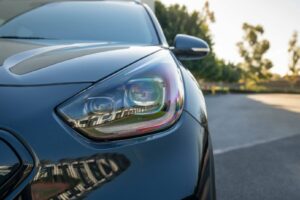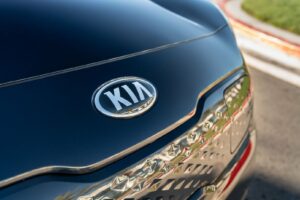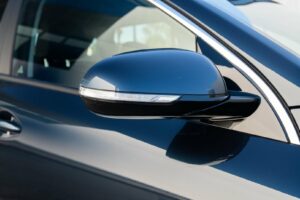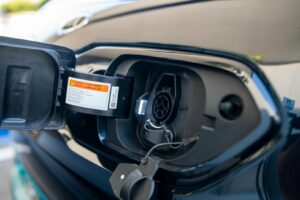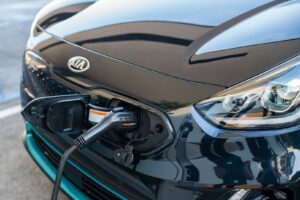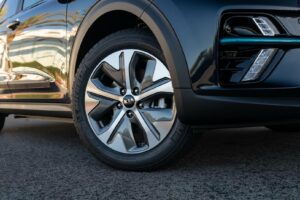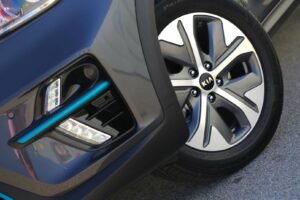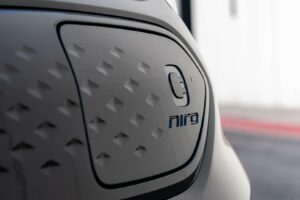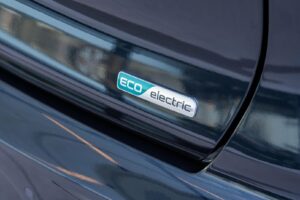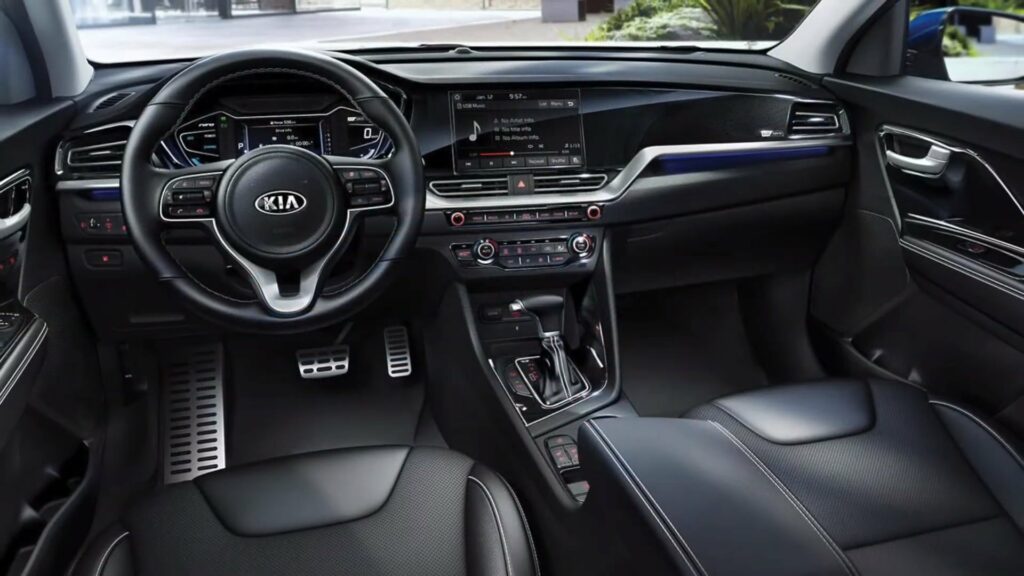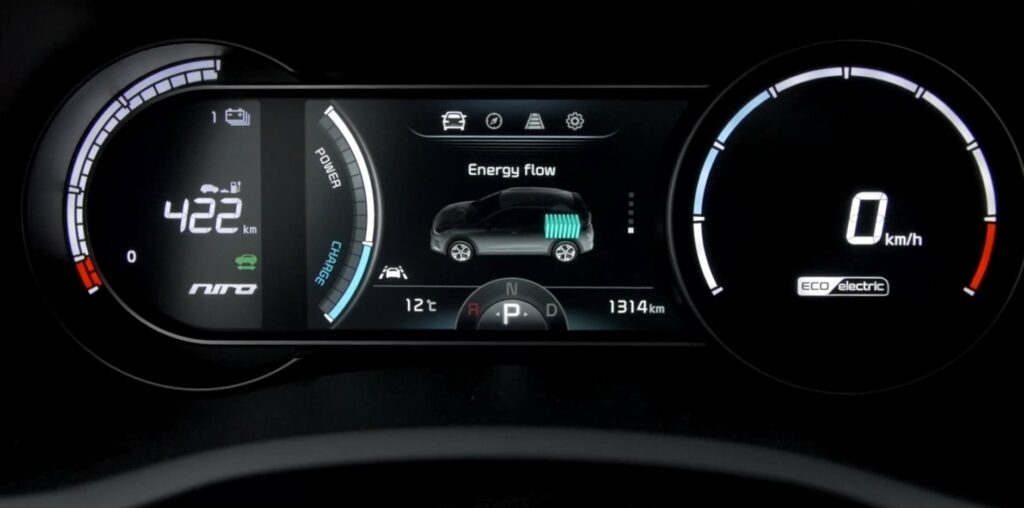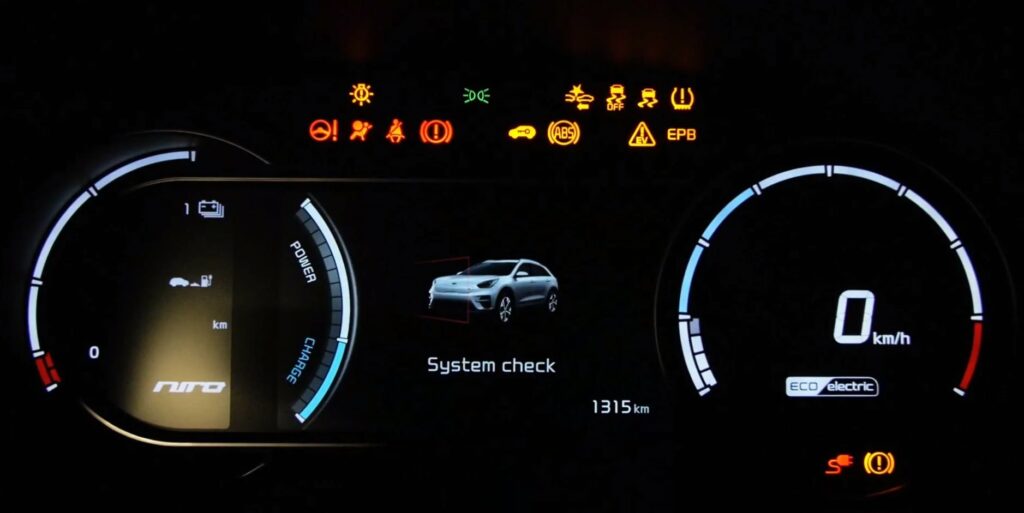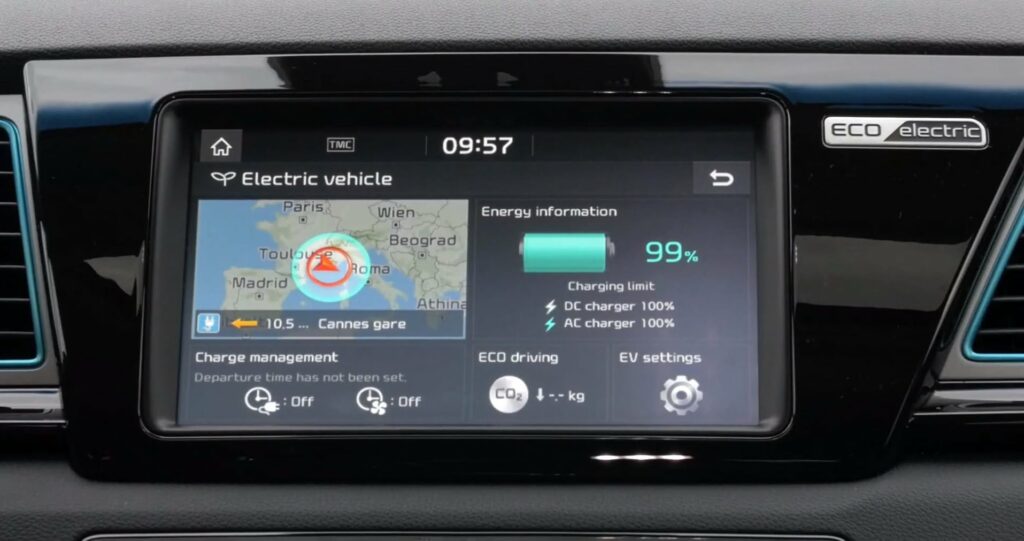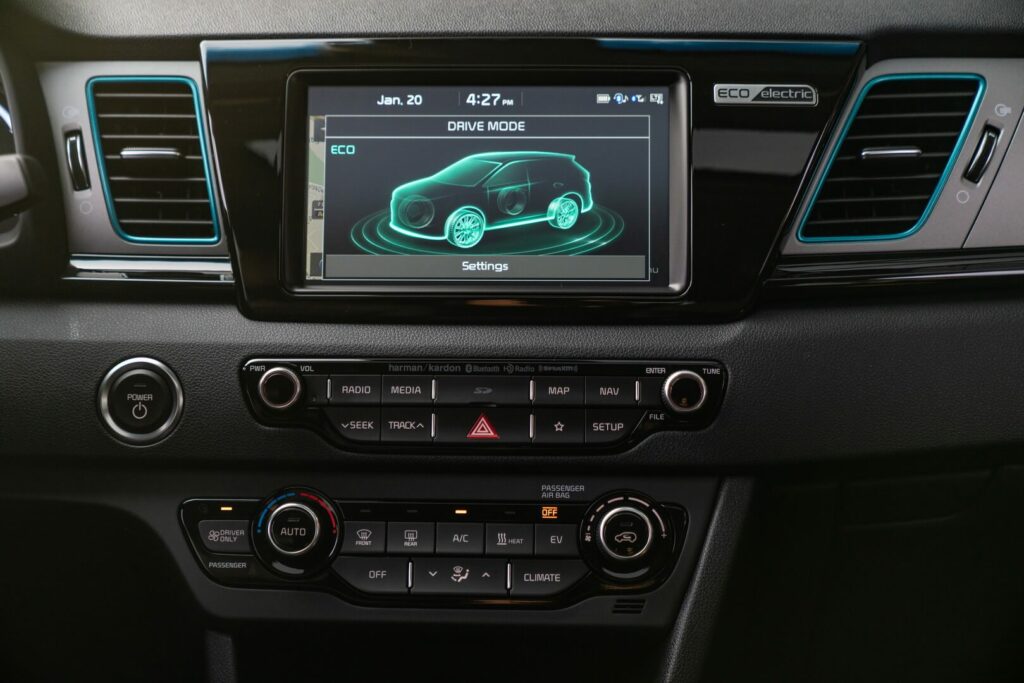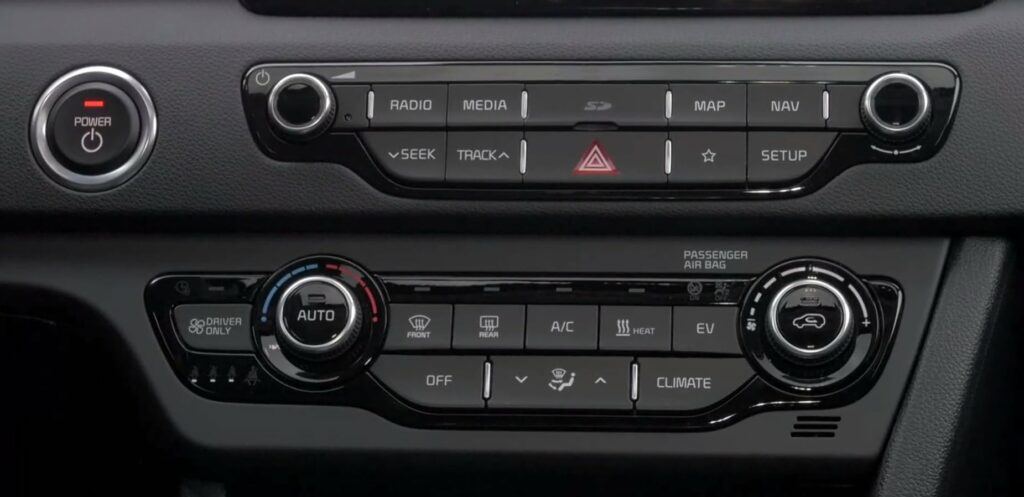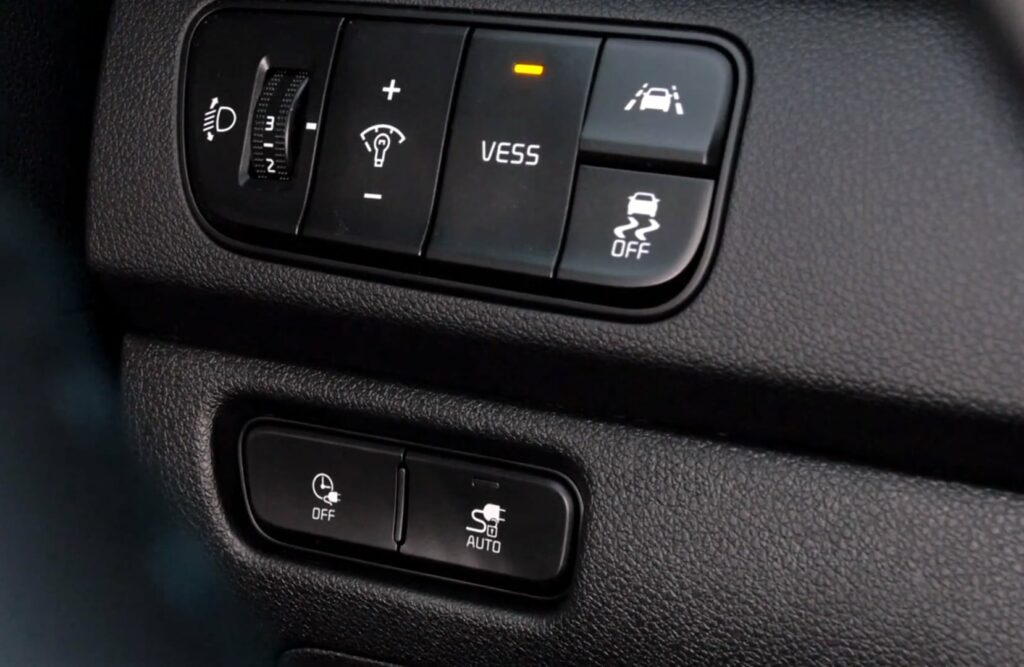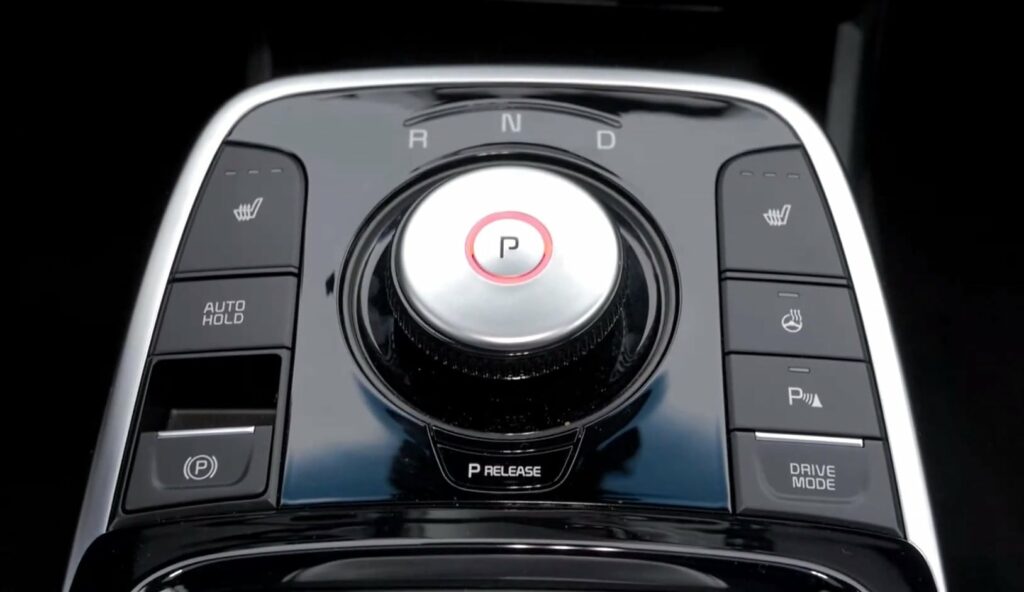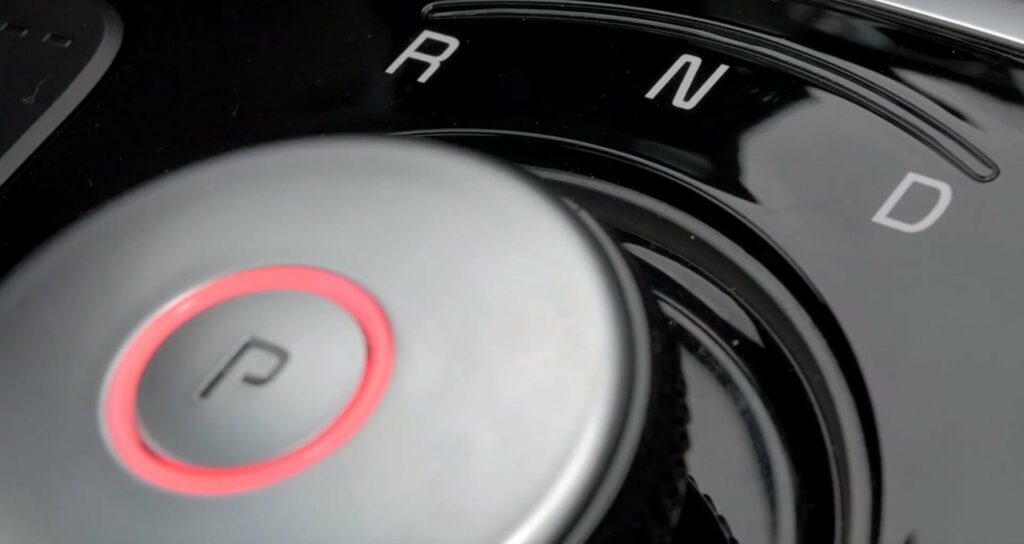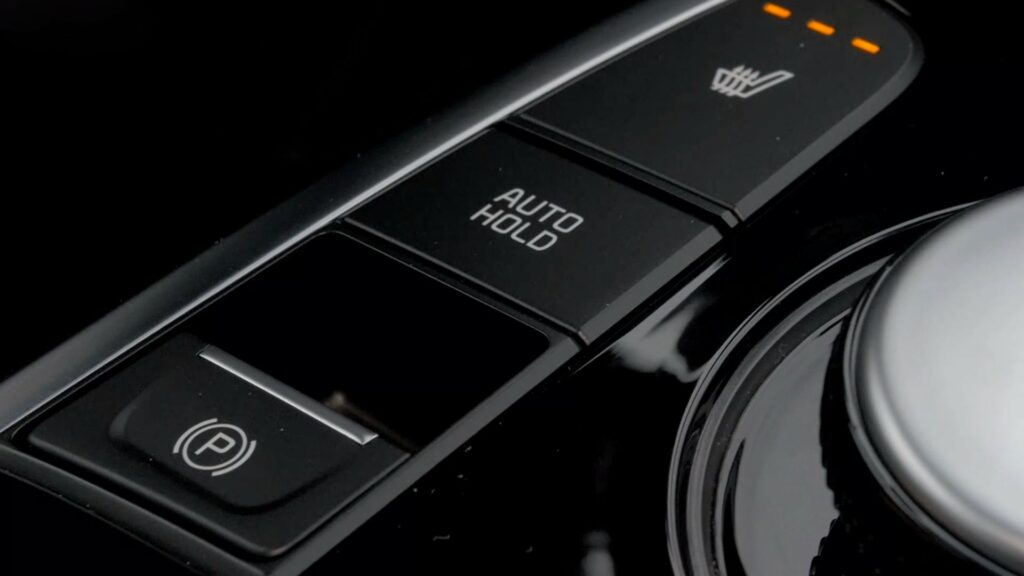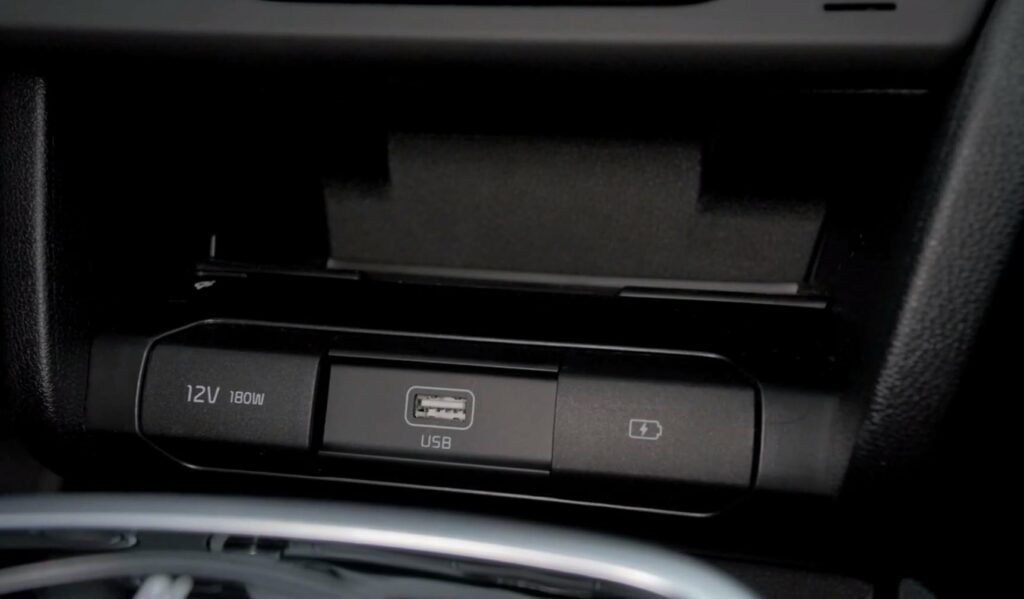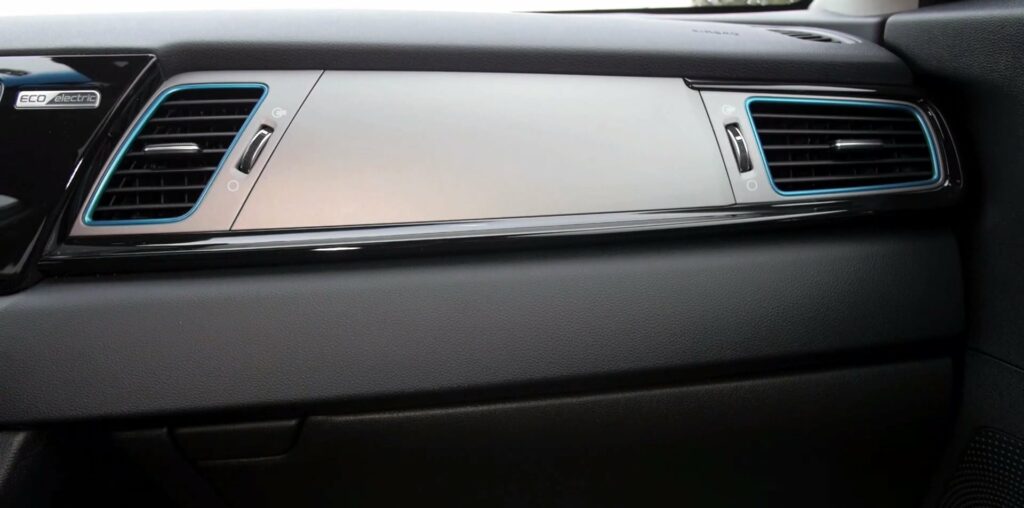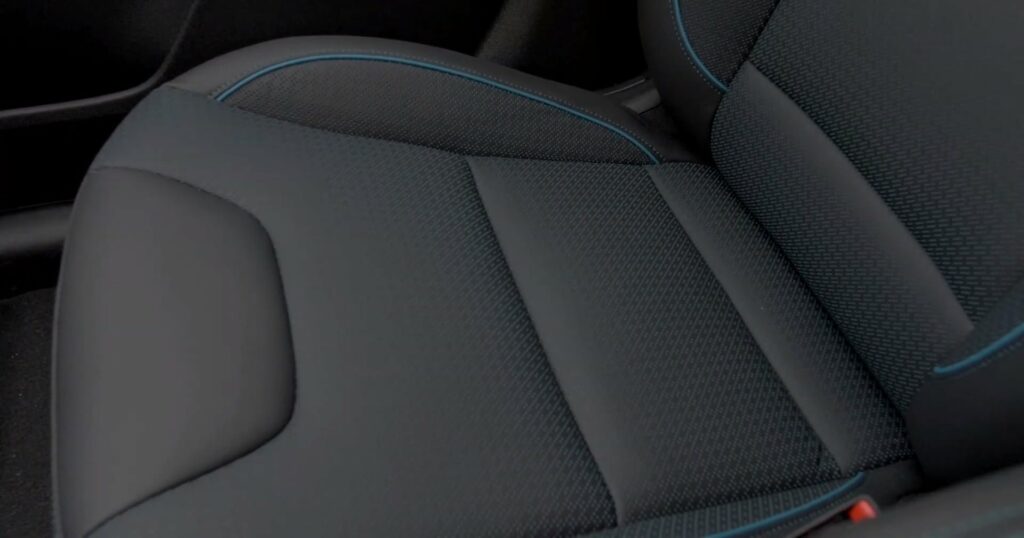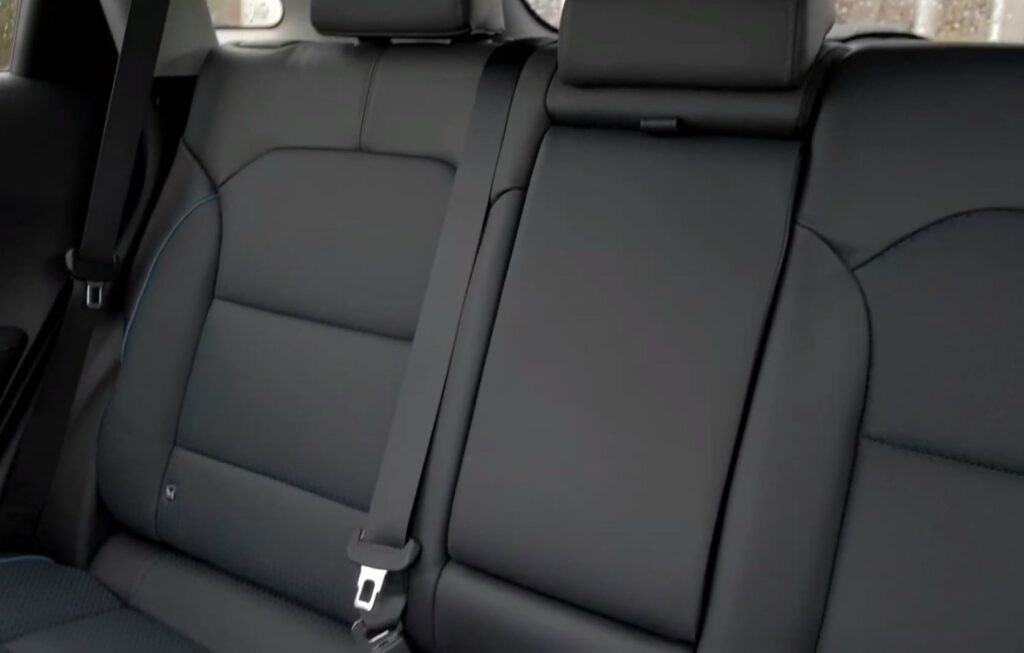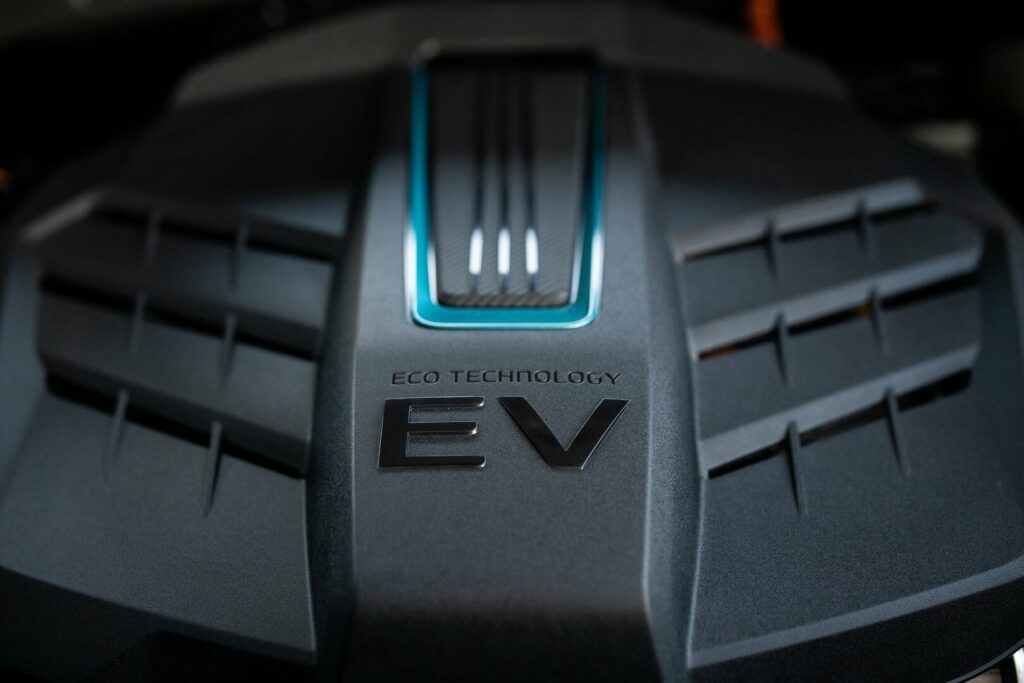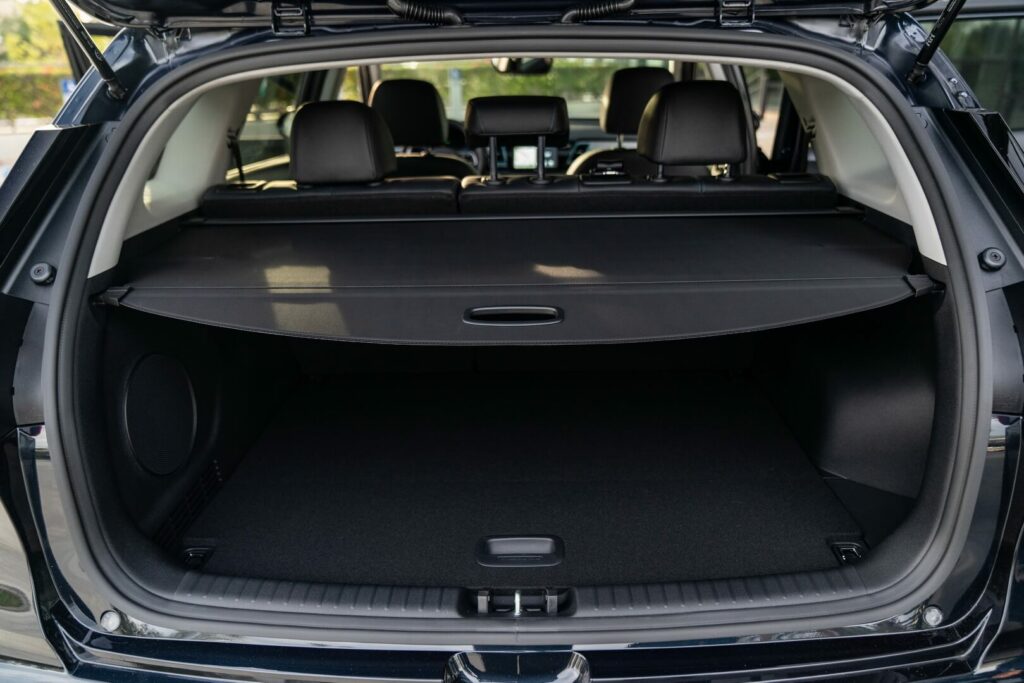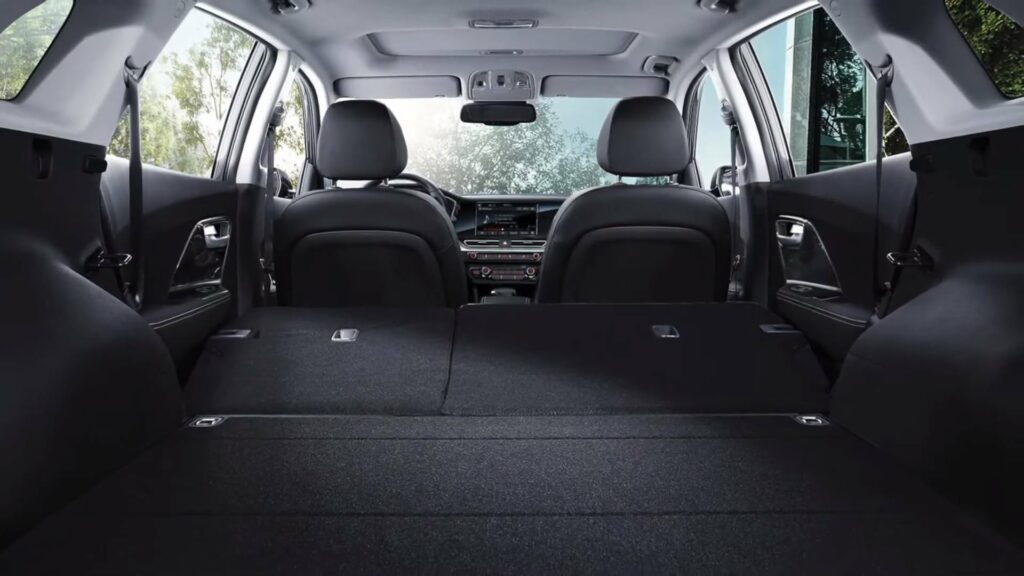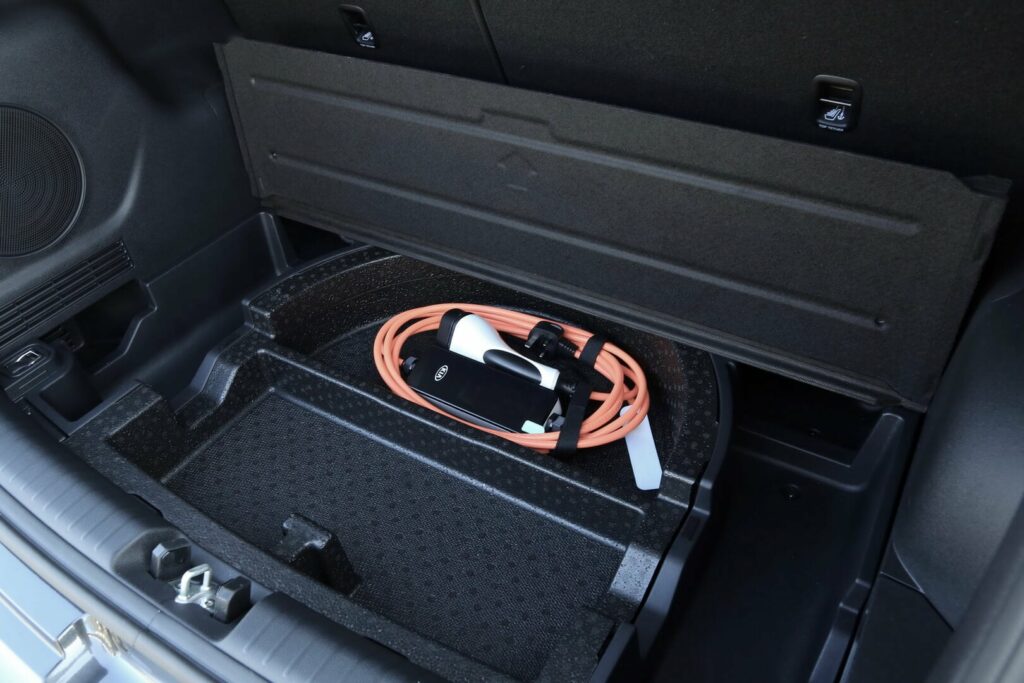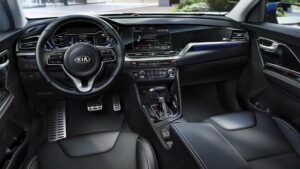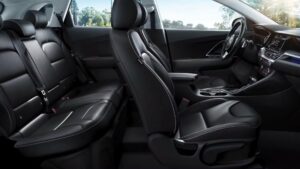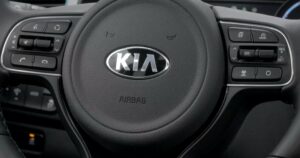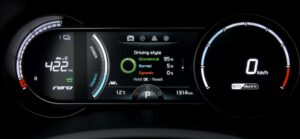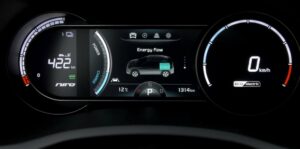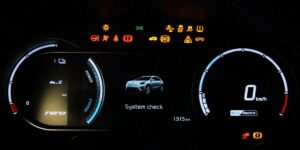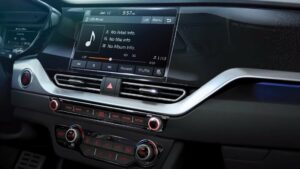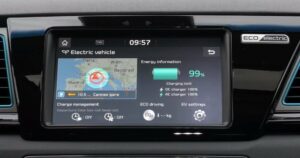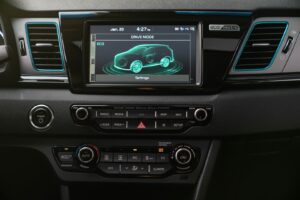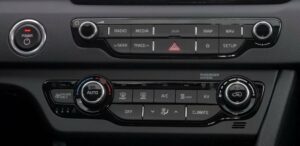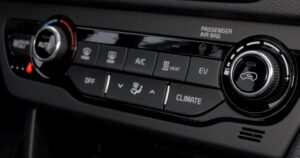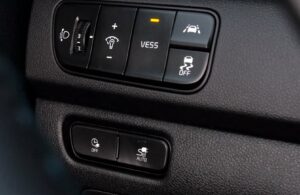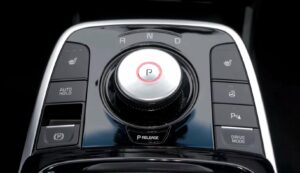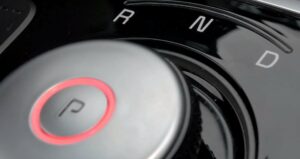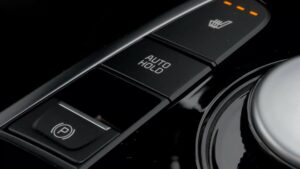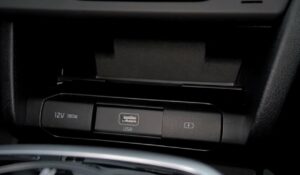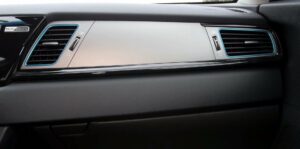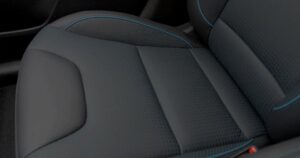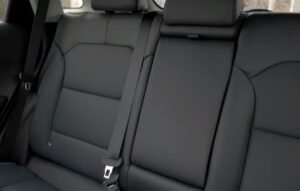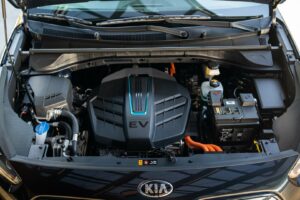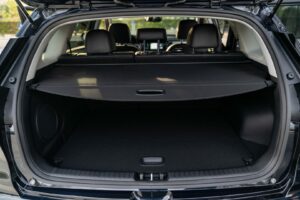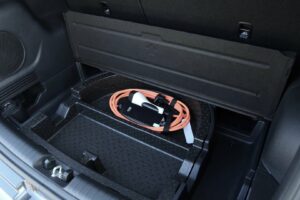Kia e-Niro 39 kWh
The Kia e-Niro 39 kWh is another electric SUV produced by Kia Motors. It is powered by a smaller 39.2 kWh lithium-ion battery pack and an electric motor that delivers 100 kW, 395 Nm of torque. The vehicle has a range of up to 235 km on a single charge, according to the WLTP test cycle.
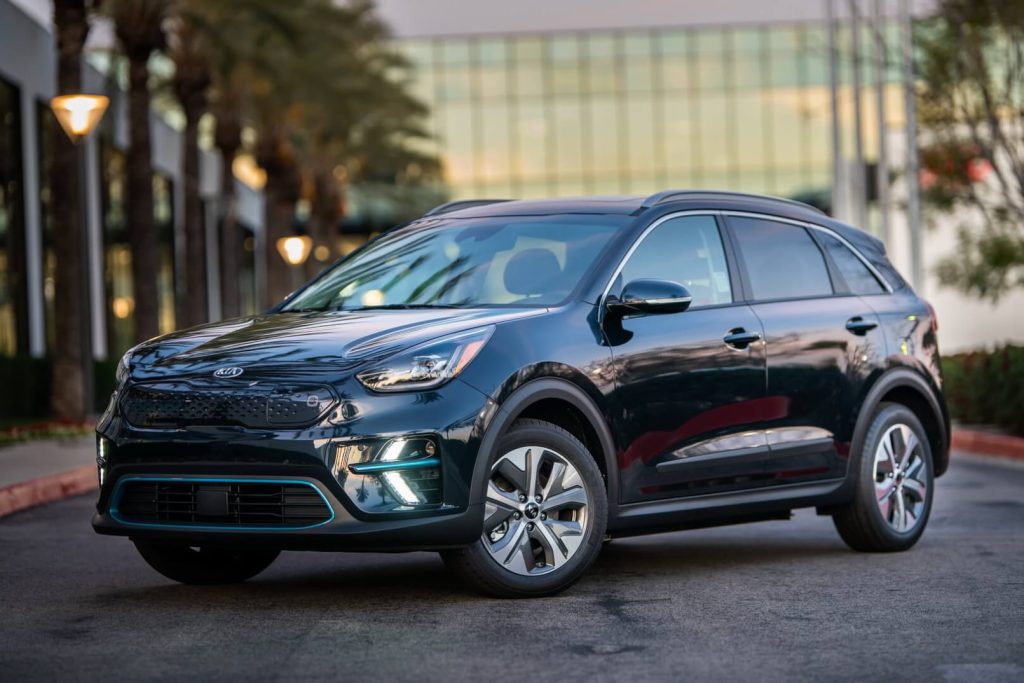
Like the e-Niro 64 kWh, the e-Niro 39 kWh is equipped with a number of features, including an 8-inch touchscreen display, a rearview camera, Bluetooth, and a 7-inch digital instrument cluster. It is also equipped with several driver assistance systems, such as adaptive cruise control, forward collision warning with automatic emergency braking, and lane departure warning.
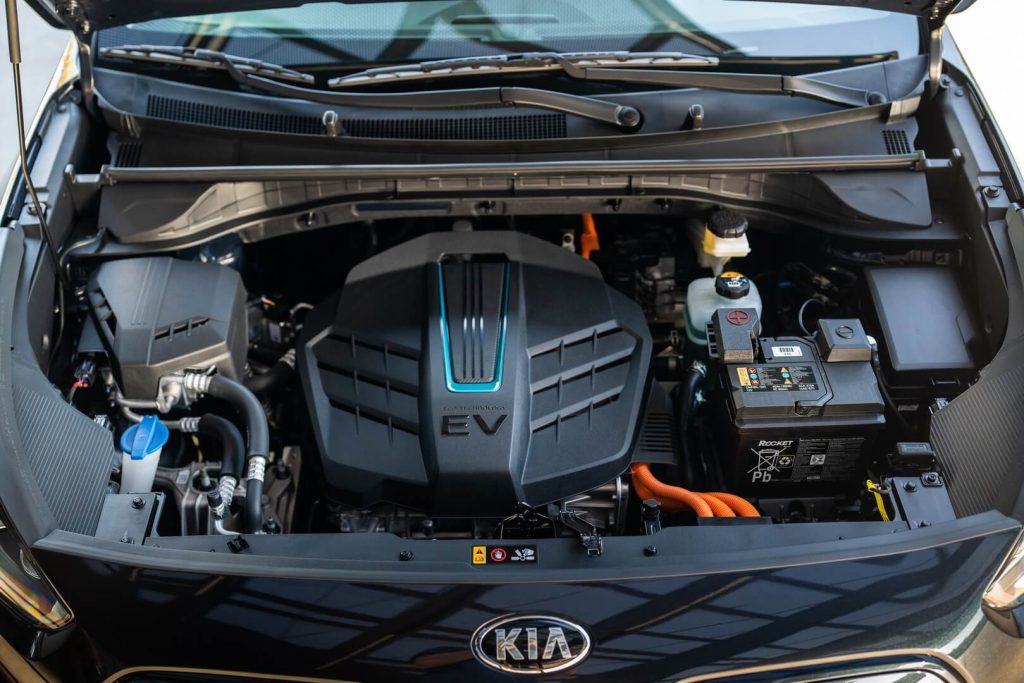
Overall, the Kia e-Niro 39 kWh is a practical and versatile electric SUV that offers a decent range for daily commuting and city driving. It has received positive reviews for its spacious interior, comfortable ride, and well-designed features. However, it may not be the best choice for long-distance travel because of its limited range compared to other electric vehicles on the market.
| Performance | |
| Acceleration 0 – 100 km/h | 9.8 sec |
| Top Speed | 155 km/h |
| Electric Range | 235 km |
| Total Power | 100 kW (136 PS) |
| Total Torque | 395 Nm |
| Drive | Front |
| Battery and Charging | |
| Battery Capacity * | 42.0 kWh |
| Battery Useable | 39.2 kWh |
| Europe | |
| Charge Port | Type 2 |
| Port Location | Front – Middle |
| Charge Power | 7.2 kW AC |
| Charge Time (0->235 km) | 6h30m |
| Charge Speed | 37 km/h |
| Fastcharge Port | CCS |
| FC Port Location | Front – Middle |
| Fastcharge Power (max) | 50 kW DC |
| Fastcharge Time (24->188 km) | 43 min |
| Fastcharge Speed | 230 km/h |
| Energy Consumption | |
| EVDB Real Range | |
| Range | 235 km |
| Vehicle Consumption | 167 Wh/km |
| CO2 Emissions | 0 g/km |
| Vehicle Fuel Equivalent | 1.9 l/100km |
| WLTP Ratings | |
| Range | 289 km |
| Rated Consumption | 153 Wh/km |
| Vehicle Consumption | 136 Wh/km |
| CO2 Emissions | 0 g/km |
| Rated Fuel Equivalent | 1.7 l/100km |
| Vehicle Fuel Equivalent | 1.5 l/100km |
|
Rated = official figures as published by manufacturer. Rated consumption and fuel equivalency figures include charging losses.
|
|
|
Vehicle = calculated battery energy consumption used by the vehicle for propulsion and on-board systems.
|
|
| Real Energy Consumption between 110 – 238 Wh/km | |
| City – Cold Weather | 170 Wh/km |
| Highway – Cold Weather | 238 Wh/km |
| Combined – Cold Weather | 196 Wh/km |
| City – Mild Weather | 110 Wh/km |
| Highway – Mild Weather | 182 Wh/km |
| Combined – Mild Weather | 145 Wh/km |
|
Energy use for each trip will vary considerably depending on the driver and the conditions. Therefore, we have provided a range of estimates which can be useful in developing an understanding of the potential benefits of this technology. |
|
| Safety (Euro NCAP) | |
| Safety Rating | |
| Adult Occupant | 83% |
| Child Occupant | 80% |
| Rating Year | 2016 |
| Vulnerable Road Users | 57% |
| Safety Assist | 59% |
|
For more details on the safety rating of this vehicle, visit euroncap.com
|
|
| Dimensions and Weight | |
| Length | 4375 mm |
| Width | 1805 mm |
| Width with mirrors | No Data |
| Height | 1570 mm |
| Wheelbase | 2700 mm |
| Weight Unladen (EU) | 1667 kg |
| Gross Vehicle Weight (GVWR) | 2080 kg |
| Max. Payload | 488 kg |
| Cargo Volume | 451 L |
| Cargo Volume Max | 1405 L |
| Cargo Volume Frunk | No Data |
| Roof Load | 100 kg |
| Tow Hitch Possible | No Data |
| Towing Weight Unbraked | 0 kg |
| Towing Weight Braked | 0 kg |
| Vertical Load Max | No Data |
| Miscellaneous | |
| Seats | 5 people |
| Isofix | Yes, 2 seats |
| Turning Circle | 10.6 m |
| Platform | No Data |
| Car Body | SUV |
| Segment | JC – Medium |
| Roof Rails | Yes |
| EV Dedicated Platform | No Data |
Home and Destination Charging (0 -> 100%)
A public charging station is required to use the highest possible charging rate. The EVSE/charging station’s charging capacity affects how long it takes to fully charge the battery. The table below shows all possible options for fully charging the Kia e-Niro 39 kWh.
In Europe, plugging an electric car into an outlet is often as easy as plugging it into a household outlet, but there are differences from country to country. The table below shows the different ways to charge the Kia e-Niro 39 kWh, but in some countries some chargers may not be available.
Type 2 ( IEC 62196)

| Charging Point | Max. Power | Power | Time | Rate |
| Standard 7.2 kW On-Board Charger | ||||
| Wall Plug (2.3 kW) | 230V / 1x10A | 2.3 kW | 20h15m | 12 km/h |
| 1-phase 16A (3.7 kW) | 230V / 1x16A | 3.7 kW | 12h30m | 19 km/h |
| 1-phase 32A (7.4 kW) | 230V / 1x31A | 7.2 kW | 6h30m | 36 km/h |
| 3-phase 16A (11 kW) | 230V / 1x16A | 3.7 kW | 12h30m | 19 km/h |
| 3-phase 32A (22 kW) | 230V / 1x31A | 7.2 kW | 6h30m | 36 km/h |
| Optional 11.0kW On-Board Charger | ||||
| Wall Plug (2.3 kW) | 230V / 1x10A | 2.3 kW | 20h15m | 12 km/h |
| 1-phase 16A (3.7 kW) | 230V / 1x16A | 3.7 kW | 12h30m | 19 km/h |
| 1-phase 32A (7.4 kW) | 230V / 1x32A | 7.4 kW | 6h15m | 38 km/h |
| 3-phase 16A (11 kW) | 400V / 3x16A | 11 kW | 4h15m | 55 km/h |
| 3-phase 32A (22 kW) | 400V / 3x16A | 11 kW | 4h15m | 55 km/h |
Fast Charging (10 -> 80%)
If you want to enjoy driving an electric car, one of the most important features to consider is the number of miles per hour the car can travel while charged. This is called the “range” of the car. All electric cars have a certain range, even if they are 100% charged. This is because they do not have an internal combustion engine to lean on if you need to drive a long distance.
Max. Power: The maximum power provided by the charging point
Avg. Power: The average power provided by the charging point during a session of 10% to 80%.
Time: the time it takes to charge from 10% to 80%
Speed: the average charging rate during the session of 10% to 80%
Combined Charging System (CCS Combo 2)
| Charging Point | Max. Power | Avg. Power | Time | Rate |
| CCS (50 kW DC) | 50 kW | 40 kW | 43 min | 230 km/h |
| CCS (100 kW DC) | 50 kW | 40 kW | 43 min | 230 km/h |
| CCS (150 kW DC) | 50 kW | 40 kW | 43 min | 230 km/h |
| Brand | Kia |
| Model | e-Niro 39 kWh |
| Body Style | SUV |
| Car Engine | electric |
| Motor power | 100 |
| Maximum Torque, Nm | 395 |
| Battery Energy, kWh | 42.0 |
| Power reserve (NEDC/EPA/WLTP), km | - / - / 235 |
| Level Charging (230/400/DC), hours | - / 4.15 / 0.43 |
| Electrical Acceleration, 0-100 km/h (0-62.1 mph) in sec | 9.8 |
| Top Speed, km/h | 155 |

